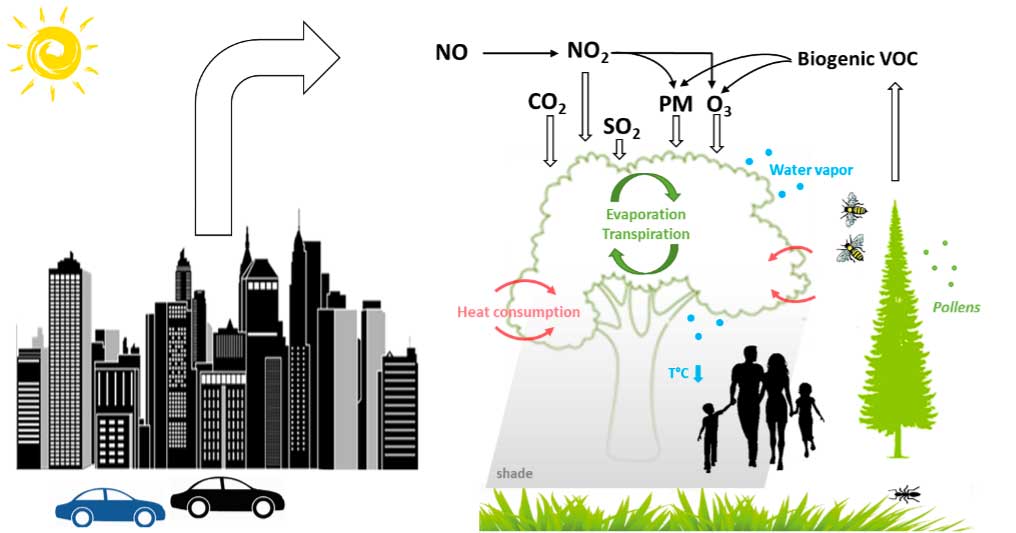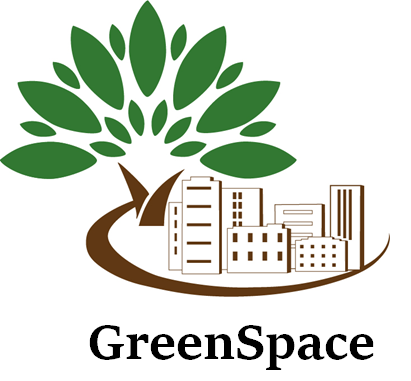GreenSpace
Satellite-based Green Spaces mapping for Greening and Healthy Cities
Overview
Against a backdrop of climate change, air pollution, the increase in greenhouse gases and urban heat islands are major problems affecting people's quality of life and well-being. As part of France's Grenelle of Environnement and Europe's Green Deal, environmental policies such as the European Union's biodiversity strategy (COM(2020) 380) and pollinator strategy (COM(2021) 261) require towns and cities with at least 20,000 inhabitants to :
- Produce a carbon footprint report every 3 years,
- Produce a Territorial Climate Air Energy Plan every 5 years,
- Developing an "Ambitious Urban Greening Plan”.
As a result, municipalities, inter-municipalities, and local authorities with more than 20,000 inhabitants need a concrete, realistic and quantified assessment of their capacity to eliminate atmospheric pollution and greenhouse gases. However, municipal inventories only count 10 to 20% of the tree stock, i.e. the trees managed by the municipality, while the rest are in private ownership, where counting is only possible by remote sensing.
GreenSpace offers local authorities:
#1 - A complete inventory of the tree stock
By analyzing very high-resolution satellite images and using a GIS (geographic information system), our approach will enable us to detect, delimit, count, classify and map tree species in the main cities, to provide a complete inventory of private and public trees. We will exploit the spectral and textural characteristics of the images to classify trees by dominant species. The counting methodology has already been tested in 3 areas using high-resolution WorldView and Pleiades satellite images (Sicard et al., 2023). This complete inventory should make it possible to realistically quantify the services provided by trees in order to quantify the elimination of the main air pollutants and greenhouse gases by urban trees.
#2 - An estimate of the environmental benefits of the tree stock
Vegetation facilitates the deposition of particles (PM2.5, PM10 ) and gases on the plant surface, and absorbs gaseous air pollutants (CO2, NO2 and O3) through the stomata, resulting in an effective long-term improvement in air quality across the city. To reduce pollution effectively, municipalities need a realistic assessment of the role of trees in air quality.
On the basis of a complete inventory (number, location, species) of public and private tree species at local authority level (#1), we will quantify (in tons per year) the capacity of tree species to eliminate the main pollutants (NO2 , O3 , PM2.5 , PM10 ) and to sequester greenhouse gases (CO2 and O3 ) using a new analysis of satellite images coupled with air quality modelling. By analyzing satellite images in tri-stereoscopy, we will obtain precise data on the structural characteristics of each tree (e.g. tree height), which is essential for quantifying its carbon storage capacity.

Interactions between anthropogenic pollutant emissions, air pollution, green spaces, biodiversity, and public well-being. © ARGANS
#3 - Mapping urban heat islands
Very high-resolution satellite images provide a better map of the ground surface. Urban objects (buildings, roads, vegetation) can be finely analyzed. The tri-stereoscopic processing of Pleiades images enables the height of urban objects to be estimated from a Digital Surface Model. Satellite images (e.g. Landsat, 30m resolution) can be used to map urban surface temperatures. In order to spatially structure urban heat islands, a Local Climate Zones (LCZ) classification is applied to detect urban heat islands and define sensitive areas. Pleiades images will be used to determine the LCZs more accurately. The maps will be produced in a GIS environment to support planning and development documents.
#4 - Recommendations for healthier air: Planting the right species in the right place
Which plant species are best suited to improving air quality and sequestering carbon, and which should be avoided? GreenSpace offers a guide with recommendations for implementing a planting policy with a list of appropriate species to plant for healthier air, in order to comply with the forthcoming COM(2020)380 regulations, which require towns and cities with at least 20,000 inhabitants to develop an ambitious Urban Greening Plan.
Application site(s)
GreenSpace is the fruit of a dozen years of preparatory scientific work. An initial demonstrator of GreenSpace services has been deployed in 3 European cities (Aix-en-Provence, Florence and Kaunas). We are now moving on to the prototyping phase, considering the needs to be modulated according to the type of urban habitat, climatic conditions and the specific needs of local authorities. To overcome these problems, the services will be fully prototyped in 2 additional cities.
- Territory 1: Valencia, Spain
- Territory 2 : Bucharest, Romania
Data
Satellite
For each tree, precise data on location, species, and structural characteristics such as tree height, leaf area index and diameter at breast height are essential for quantifying ecosystem services.
Since 2000, the spatial resolution of very high-resolution optical satellite sensors has made it possible to detect, classify and map tree attributes on a fine scale and at a lower cost than field observations or airborne laser scanning. We have demonstrated the potential of Pleiades and WorldView-2 satellite images (approximately 0.5 and 0.3 m spatial resolution on the ground, respectively, in panchromatic) to provide a complete inventory of trees in 3 test areas (Sicard et al., 2023).
Results – Final product(s)
GreenSpace will provide municipalities and local authorities with the information they need to comply with the new laws and regulations linked to the European Green Deal, as well as guidelines for an appropriate greening strategy.
The end products are:
#1 - Complete inventory of the tree stock
#2 - Estimating the environmental benefits of the tree stock
#3 - Mapping urban heat islands
#4 - Recommendations for healthier air
In addition, there will be a transfer of knowledge to town planners and local stakeholders: the results will be prepared with local stakeholders and delivered via a WebGIS in a format that can be used on the GISs of local authority technical departments.
Public communication programmes will inform owners of private spaces about the rules and good maintenance practices.
References
- Sicard P., Coulibaly F., Lameiro M., Araminiene V., De Marco A., et al., 2023, “Detection and Classification of Urban Trees from Very High-Resolution Satellite Imagery”. Urban Forestry & Urban Greening 81: 127866.
- Sicard P., Agathokleous E., Anenberg S.C., De Marco A., Paoletti E., Calatayud V., 2023, “Trends in urban air pollution over the last two decades: A global perspective”. Science of the Total Environment 858: 160064.
Related projects
SCO projects
Other
- The AIRFRESH project "Air pollution removal by urban forests for a better human well-being" funded by the European LIFE 2019 programme.
Project news
- 12/12/2024: GreenSpace unveils first results for Valence study case
- 23/09/2024: Presentation of the GreenSpace project and its progress at the 14th SCO France Quarterly Meeting "Monitoring air quality from space"
- 12/02/2024: GreenSpace: choose carefully trees species






